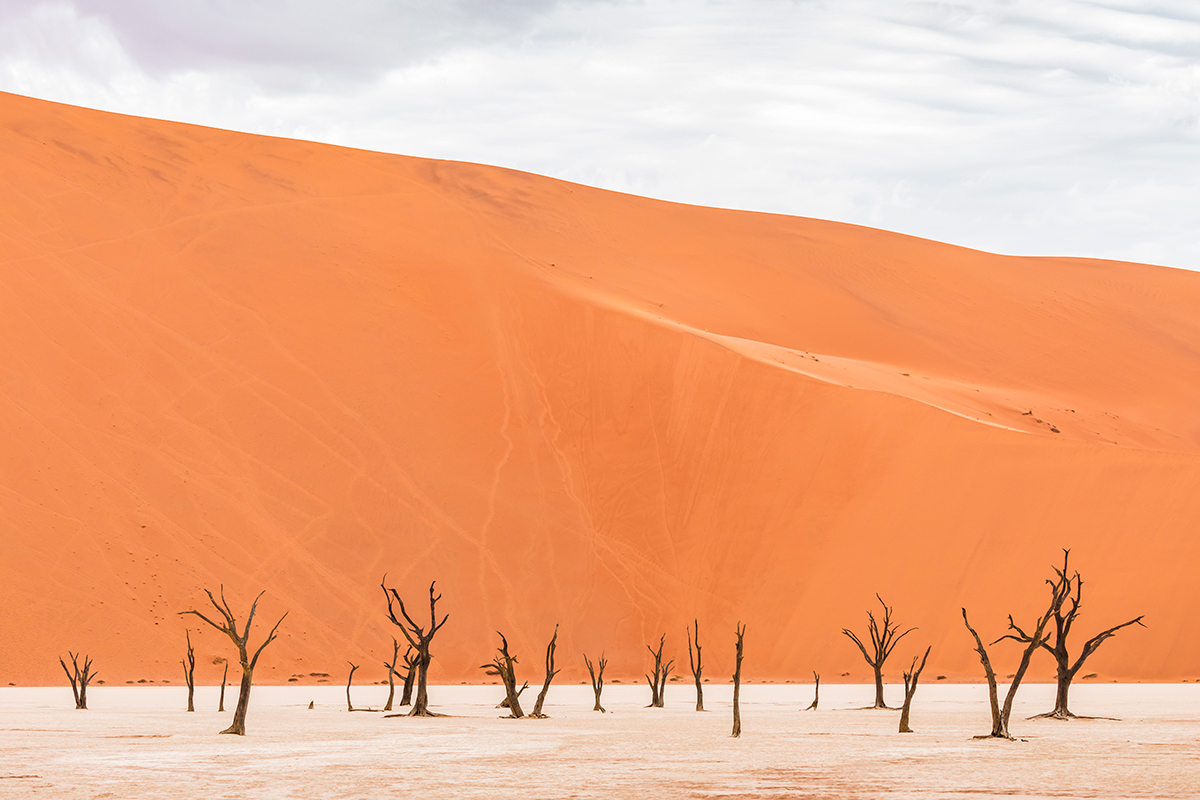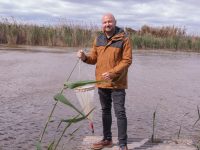
Unknown to many and a dream destination to others, Dead Vlei is a natural treasure trove that will delight any nature lover – and probably those who are not. Located in Namibia’s Namib-Naukluft National Park, it is guarded by some of the largest dunes on the planet. These include Big Daddy Dune, which rises an imposing 350 metres starting at 800 metres above sea level. From a distance, this sight magically turns those who choose to walk it into ants.
The beauty of Dead Vlei lies in the stillness that has prevailed in the area for centuries, ever since the Tsauchab River flooded the valley and created a swamp where flora such as camel thorn acacias (Vachellia erioloba) thrived. The climate changed and the prevailing conditions challenged the ecosystem, which inevitably became a graveyard of immobile logs in a dry white clay lake.
This alone would not be enough to attract thousands of tourists each year. Nor is it enough to attract many of the world’s best photographers. For at Dead Vlei, a number of conditions come together to create an essence that is unlikely to be found elsewhere. The harsh light of the relentless sun of the Namib Desert – which has existed since the time of the dinosaurs – the ochre dunes that surround the valley, the chalky soil that supports the remains of the acacia trees, and the hard texture of their trunks are the perfect combination that makes us want us to press the shutter of our camera again and again. The same feeling is probably shared by the hundreds of tourists who flock to Dead Vlei. Not surprisingly, one of the biggest challenges is to find a composition that avoids the presence of people in the photograph.





